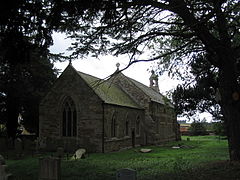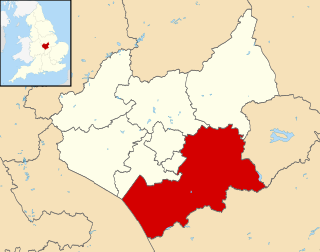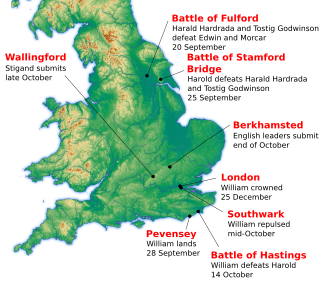
Birstall is a large village and civil parish within the Charnwood borough of Leicestershire, England. It is three miles north of Leicester city centre and is part of the wider Leicester Urban Area.

Walcott is a small village and civil parish in the North Kesteven district of Lincolnshire, England. The population of the civil parish at the 2011 census was 566. It is situated approximately 2 miles (3 km) north from Billinghay and 7 miles (11 km) north-east from the town of Sleaford.

Braunstone is a civil parish and is the largest parish within the district of Blaby in Leicestershire, England, now known as the Town of Braunstone or more commonly, Braunstone Town. In 2007 the population was around 15,000. There are around 7,500 households including Thorpe Astley. At the 2011 census the population of the civil parish had increased to 16,850.

Waltham on the Wolds is an English village located in the civil parish of Waltham on the Wolds and Thorpe Arnold, in the Melton borough of Leicestershire, England. It lies about 5 miles (8.0 km) north-east of Melton Mowbray and 11 miles (17.7 km) south-west of Grantham on the A607 road. The population of the civil parish was 967 in 2011.

Glooston is a small village and civil parish in the Harborough district of Leicestershire, England. According to the 2001 census the parish had a population of 54, increasing to 147 at the 2011 census.

Stretton en le Field is a small village and civil parish in the North West Leicestershire district of Leicestershire, England. It is about seven miles (11 km) south-west of Ashby de la Zouch, and according to the 2001 census the parish had a population of 36. At the 2011 census the population remained less than 100 and is included in the civil parish of Chilcote.
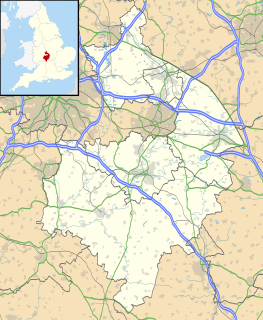
Binton is a village and civil parish in the Stratford district of Warwickshire, England. It is about five miles (8 km) west of Stratford-upon-Avon. According to the 2001 census it had a population of 272, increasing to 311 at the 2011 census.
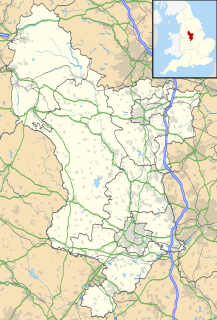
Newton Solney is a small village and civil parish in South Derbyshire, England, located about two miles (3 km) from the East Staffordshire border, near to Burton upon Trent. The population of the civil parish as of the 2011 census was 659. Its nearest neighbour is Repton, situated about two miles (3 km) to the northeast.
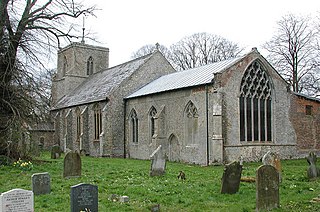
Tittleshall is a village and civil parish in the English county of Norfolk.

Whitstone is a village and civil parish in east Cornwall, England, United Kingdom. It is roughly halfway between the towns of Bude and Launceston. The population at the 2011 census was 590.

Spernall is a remote village 4 miles (6.4 km) north of Alcester in the Parish of Oldberrow, Morton Bagot, and Spernall, in the Stratford on Avon District of Warwickshire, England. In 2001 it had a population of 153. It is situated on the banks of the small River Arrow, the name meaning Spera's border. Early forms of the name are Spernore. and Spernoure in the 1327 Subsidy Roll. The village consists only of the church and rectory and a few scattered farms and cottages. At some time between 1195 and 1361 the parish was largely depopulated by pestilence, so that many of the villein tenements, which had hitherto accounted for almost the whole population, came into the hands of freemen. This may well refer to the Black Death; the priest at Spernall, Nicholas atte Yate, died in 1349 and there was another institution in 1351.

Sutton Scarsdale is a very small village in Derbyshire, England. It is in the North East Derbyshire district. It is very close to the M1 motorway. It is in the civil parish of Sutton cum Duckmanton.

Honing is a village and a civil parish in the English county of Norfolk. The village is 15.3 miles (24.6 km) north-northeast of Norwich, 13.3 miles (21.4 km) south east of Cromer and 135 miles (217 km) north-east of London. The village lies 3.9 miles (6.3 km) east of the town of North Walsham. The nearest railway station is at Worstead on the Bittern Line which runs between Cromer and Norwich. The nearest airport is Norwich International Airport. The village and parish of Honing with Crostwight had in the 2001 census, a population of 319, but this fell to 312 at the 2011 Census. For the purposes of local government, the village falls within the district of North Norfolk.

Kilkhampton is a village and civil parish in northeast Cornwall, England, United Kingdom. The village is on the A39 about four miles (6 km) north-northeast of Bude.

Fifield is a village and civil parish about 4 miles (6.4 km) north of Burford in Oxfordshire. The western boundary of the parish forms part of the county boundary with Gloucestershire. The 2011 Census recorded the parish's population as 240.

Semer is a small village and civil parish in Suffolk, England. Located adjacent to a bridge over the River Brett on the B1115 between Hadleigh and Stowmarket, it is part of Babergh district. The parish also contains the hamlets of Ash Street and Drakestone Green.

Smallburgh is a village and a civil parish in the English county of Norfolk. The village is fourteen miles (21 km) south-east of Cromer, fourteen miles (21 km) north-east of Norwich and 132 miles (212 km) north-east of London. The village lies five miles (8 km) south-east of the nearby town of North Walsham. The nearest railway station is at Worstead for the Bittern Line which runs between Sheringham, Cromer and Norwich. The nearest airport is Norwich International Airport. At the 2001 census it had a population of 518 in 219 households. For the purposes of local government, it falls within the district of North Norfolk.

St Mellion is a village and rural civil parish in east Cornwall, England, United Kingdom. The parish is about 3 miles (5 km) south of Callington and is in the St Germans Registration District. To the north, the parish is bordered by Callington and St Dominick parishes, to the east and south by Pillaton parish, and to the west by St Ive parish.

Calthorpe is a small village within the civil parish of Erpingham in the English county of Norfolk, United Kingdom. The village is located 0.5 miles (0.80 km) west of the village of Erpingham, 3.4 miles (5.5 km) north of the nearest town of Aylsham and is 15.8 miles (25.4 km) north of the nearest city of Norwich. The nearest railway station is at Gunton for the Bittern Line which runs between Sheringham, Cromer and Norwich and is 7.8 miles (12.6 km) from the village. The nearest airport is Norwich International 14.2 miles (22.9 km) south of the village.
